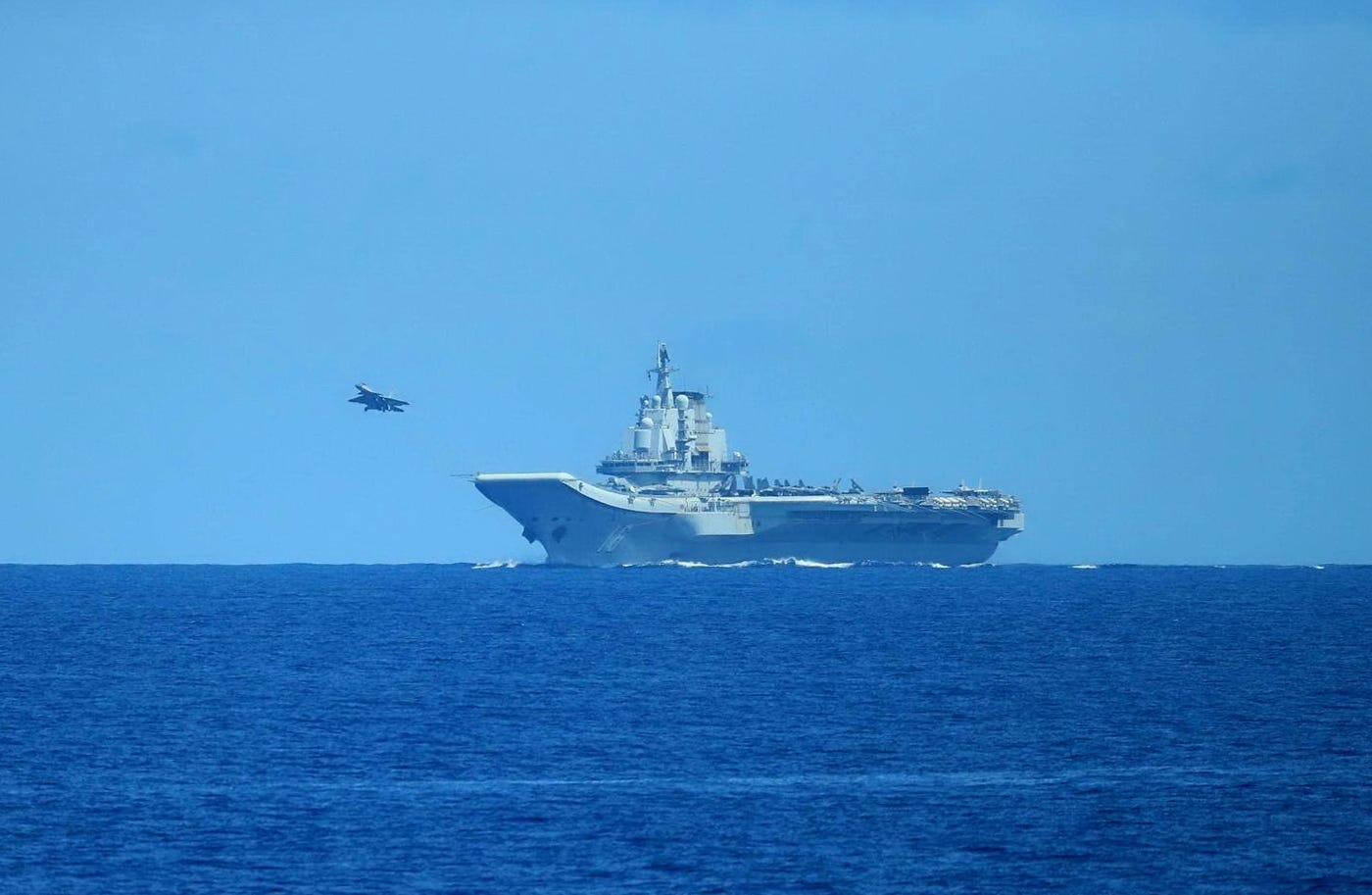Quad in Flux: Australia Watches as Trump–Modi Rift Deepens
The Quad’s unity frays as U.S.–India tensions rise, leaving Australia and Japan to steady an uneasy coalition.
Image: A PLAN Shenyang J-15 taking off from Liaoning, photo by Government of Japan / Joint Staff Office, CC BY 4.0
The Quad—an informal grouping of the U.S., India, Japan, and Australia—was once hailed as the Indo-Pacific’s strategic answer to China. Today, it looks less certain. The reemergence of Donald Trump on the U.S. political stage has unsettled India, as Trump has revived complaints about New Delhi’s “unfair trade practices” and questioned India’s reliability as a defense partner.
For Australia, this is deeply troubling. Canberra has invested heavily in the Quad as a hedge against China’s growing assertiveness, from the South China Sea to the Taiwan Strait. Japan, too, has sought to steady the grouping, urging focus on shared interests such as maritime security and supply chain resilience. But the bonds are fraying.
The Indo-Pacific cannot afford drift. China is more aggressive than ever: its navy is now the world’s largest by ship count, and its military activity near Taiwan intensifies almost weekly. Without a cohesive Quad, smaller states may hedge, striking bilateral deals with Beijing or adopting a posture of quiet accommodation.
Australia finds itself particularly exposed. Its economy remains tied to China even as its security relies on the U.S. Canberra has cultivated close defense ties with India, but if U.S.-India relations sour, it risks being forced into impossible choices. For now, Australia waits, hoping politics in Washington and Delhi stabilize before years of coalition-building unravel.
Our Take: The Quad was designed as a bulwark against Chinese dominance. If it fractures, the Indo-Pacific balance could tilt decisively in Beijing’s favor.

